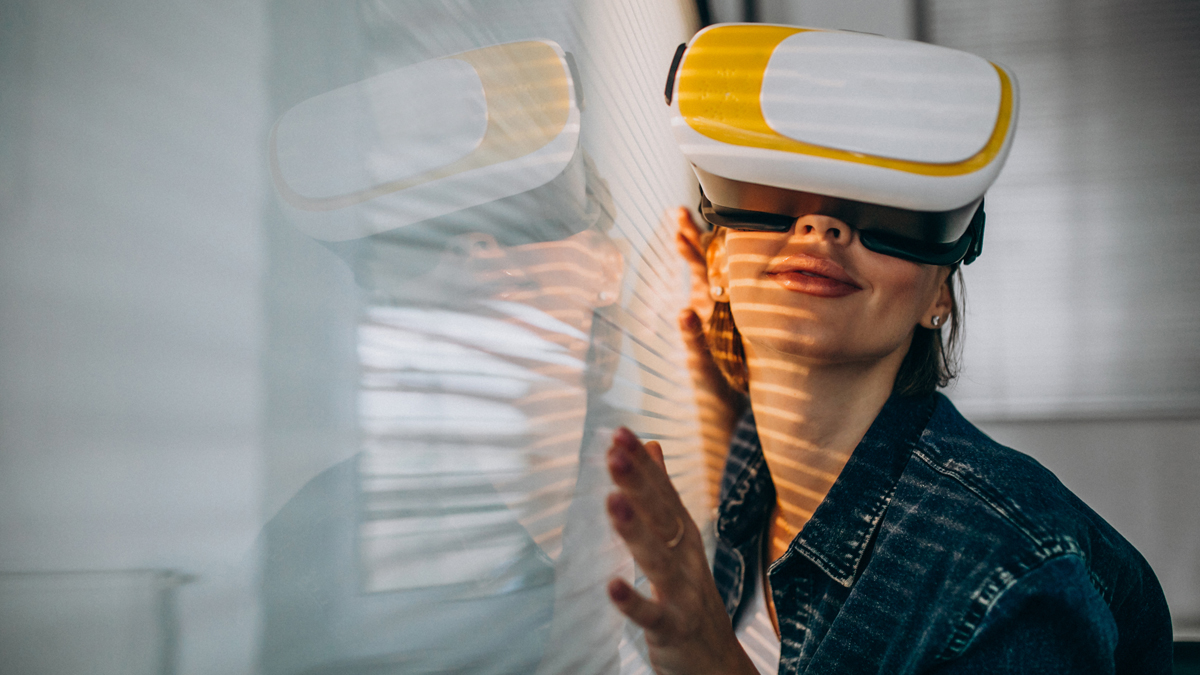Augmented reality (AR) has become a powerful tool for filmmakers seeking deeper immersion, but when combined with virtual production techniques, such as LED volumes and real-time game engines it unlocks unprecedented storytelling possibilities. “Augmented Reality Meets Virtual Production: New Frontiers in Cinematic Storytelling” explores how these two technologies merge on modern sets to create seamless, interactive worlds. This article covers eleven critical advances, from spatial anchoring and depth sensing to AI-driven environment adaptation and real-time analytics, offering readers a clear view of the practical workflows and technical innovations that are transforming cinematic storytelling.
| Table of Contents | |
|---|---|
| I. | Spatial Anchoring & Real-Time Tracking Integration |
| II. | Depth-Sensing & Occlusion Handling for Seamless AR |
| III. | HDR Lighting Match between AR Assets and LED Volumes |
| IV. | In-Headset AR Compositing Tools for On-Set Visualization |
| V. | Multi-User Collaborative AR Previsualization Workflows |
| VI. | AI-Driven Procedural Environment Adaptation in AR |
| VII. | Wearable AR Devices for Director and Crew Monitoring |
| VIII. | Synchronization of AR Overlays with Motion-Capture Data |
| IX. | Cloud-Native Streaming & Asset Management for AR Scenes |
| X. | Cross-Platform Pipeline Standards for AR + Virtual Production |
| XI. | Real-Time Analytics & Feedback Loops for AR-Enhanced Takes |
Spatial Anchoring & Real-Time Tracking Integration
Precise placement of AR assets on a physical set depends on robust spatial anchors and accurate camera tracking. By combining IMU sensors, optical markers, and simultaneous localization and mapping (SLAM) algorithms, virtual production teams can pin digital elements to real-world coordinates. As cameras move on cranes or dollies, real-time tracking data feeds into game engines, ensuring AR objects stick to the scene with no jitter. This integration streamlines on-set adjustments and preserves continuity, enabling filmmakers to visualize complex interactions between actors and digital characters live.
Depth-Sensing & Occlusion Handling for Seamless AR
Advanced depth-sensing cameras and LiDAR scanners capture detailed geometry of the set, allowing AR systems to understand distances and volumes. Integrating this information, virtual production pipelines can accurately mask or occlude digital elements behind real objects. By dynamically generating depth maps, directors ensure that virtual creatures move convincingly around pillars or behind furniture. This occlusion handling enhances realism and prevents the “floating” effect that breaks immersion, giving actors and crew an authentic view of how AR assets interact within the physical environment.
HDR Lighting Match between AR Assets and LED Volumes
To blend AR elements seamlessly with LED volume backdrops, high dynamic range (HDR) lighting calibration is essential. Virtual production teams measure light intensity, color temperature, and reflection properties of LED panels using on-set photometers. Game engines then apply these lighting profiles to AR assets in real time, ensuring shadows, highlights, and color tones match the physical set. This process eliminates visual discrepancies and maintains consistent illumination across digital and real components, making the combined scene appear as a single, cohesive environment.
In-Headset AR Compositing Tools for On-Set Visualization
Wearable AR headsets provide filmmakers and crew with live compositing tools, overlaying digital assets directly onto the camera view. With intuitive controls inside the headset, directors can adjust position, scale, and occlusion parameters of AR objects without leaving the set. Real-time feedback allows immediate creative decisions, reducing reliance on post-production fixes. These in-headset tools integrate with virtual production engines, ensuring that what people see through the lens matches the final composite, improving collaboration between departments and accelerating the storytelling process.
Multi-User Collaborative AR Previsualization Workflows
Collaborative AR previsualization platforms allow multiple users directors, cinematographers, and VFX artists to interact with the same virtual scene simultaneously. Through networked AR devices, each participant can place markers, tweak asset animations, and annotate shots in real time. Cloud synchronization keeps everyone’s view up to date, even across remote locations. This shared workflow facilitates clear communication, rapid iteration, and early detection of staging issues. As a result, teams can lock down complex AR sequences before principal photography, saving time and reducing costly reshoots.
AI-Driven Procedural Environment Adaptation in AR
Artificial intelligence algorithms can dynamically adapt AR environments to changing set conditions. By analyzing camera feeds and sensor data, procedural generation tools create and modify digital terrain, vegetation, or architectural elements on the fly. Directors specify stylistic parameters, and AI populates scenes with context-aware assets, ensuring continuity and visual variety. This procedural approach reduces manual asset creation, accelerates shot setup, and allows filmmakers to explore countless creative variations. The synergy of AI and AR elevates storytelling by offering rich, reactive worlds tailored to the narrative.
Wearable AR Devices for Director and Crew Monitoring
Lightweight AR glasses and headsets equipped with monitoring dashboards empower directors and crew to track key production metrics in real time. Vital shot information, such as framing guides, actor blocking overlays, and lens metadata, appears directly in their field of view. Technicians can monitor framerate stability, color calibration, and motion-tracking health without leaving their positions. These wearable devices streamline decision-making by centralizing technical feedback, minimizing interruptions, and maintaining creative momentum, all while ensuring that AR-enhanced scenes meet the director’s vision on the first take.
Synchronization of AR Overlays with Motion-Capture Data
Merging motion-capture data with AR overlays demands precise timing and calibration. In modern virtual production, mocap suits and camera-based tracking systems feed actor movement into the AR engine in real time. This allows digital characters or interactive effects to adhere perfectly to live performances. Timestamp synchronization, latency compensation, and network jitter mitigation techniques ensure a flawless match. The result is believable interactions between physical actors and AR assets, enabling new storytelling avenues where digital and real-world performances are perfectly intertwined on camera.
Cloud-Native Streaming & Asset Management for AR Scenes
Cloud-based pipelines revolutionize how AR assets are stored, updated, and delivered to on-set systems. By hosting 3D models, textures, and animations in a centralized repository, teams can stream high-resolution content on demand. Version control tools track changes, enabling rollback and parallel experimentation. Edge caching and optimized streaming protocols reduce latency, guaranteeing that AR devices and LED volumes display the latest assets. This cloud-native approach fosters scalability, supports geographically distributed productions, and simplifies collaboration, ensuring that complex AR scenes remain flexible and up to date.
Cross-Platform Pipeline Standards for AR + Virtual Production
Standardized protocols and file formats ensure seamless data exchange between AR tools, game engines, and virtual production hardware. Open standards such as USD (Universal Scene Description), glTF, and OSC (Open Sound Control) facilitate interoperability across platforms like Unreal Engine, Unity, and custom LED volume controllers. Consistent naming conventions, metadata schemas, and coordinate systems eliminate guesswork during asset transfer. With cross-platform pipelines, teams can plug new AR modules into existing workflows, reduce integration errors, and maintain a consistent creative vision from previsualization through final rendering.
Real-Time Analytics & Feedback Loops for AR-Enhanced Takes
Integrating analytics tools into AR pipelines provides actionable data on each take’s performance. Metrics such as tracking accuracy, frame sync reliability, and user focus areas are logged in real time. Dashboards visualize heatmaps of viewer attention, enabling teams to refine shot composition or asset behavior instantly. Automated alerts signal drift or calibration issues, prompting immediate corrections. These feedback loops accelerate creative iterations, improve on-set efficiency, and ensure that AR-enhanced sequences meet artistic and technical standards, delivering a polished cinematic experience with fewer surprises in post-production.

